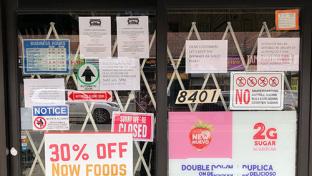Challenges, Opportunities for Indies
Independents can sometimes feel like the redheaded stepchild in the supermarket landscape, even though they make up a vibrant portion of the market. With this in mind, the USDA recently released a report, “Independent Grocery Stores in the Changing Landscape of the U.S. Food Retail Industry,” by Clare Cho and Richard Volpe.
The report is a deep dive into how independent supermarkets have fared in the years between 2005 and 2015, and especially into how the Great Recession affected these stores compared with chains. Few surprises emerged from the report; it is similar to what we’ve been reporting during the past few years and reflects what many of you have told me in our numerous conversations.
Independents generated $70 billion in sales in 2015 — about 11 percent of all supermarket sales — and employed more than 330,000 full-time staffers. In 44 percent of U.S. counties, at least half of the supermarkets were independently owned; however, the share of sales was low: Only in 19 percent of counties were the majority of sales from independent stores, and these counties represent just 28 percent of the U.S. population.
Impacts of Recession, Rural Locations
It’s no surprise that the Great Recession had a greater impact on independents, defined by the study as operators with fewer than four outlets, or that independents have a big effect on communities with smaller populations. During the 10 years the study looks at, the overall number of grocery stores increased by 7 percent, but with the onset of the recession in 2008-9, the number of independent stores stagnated, with only the number of independents declining in 1,269 counties; this has caused chain stores to gain market share.
The report also found that most independent grocery stores were superettes (58 percent), defined as stores with annual sales between $1 million to $2 million, while supermarkets (annual sales of more than $2 million) made up 33 percent. When it came to annual sales, however, the independent supermarkets had more sales than their superette counterparts — 58 percent and 27 percent, respectively. So, while more superettes may be in operation, independently owned supermarkets are attracting more customers and generating the lion’s share of sales.
The report also noted that independent stores tend to be located in rural, low-income counties where chain stores don’t have much of a presence — again, no surprise there. While independents most likely don’t have the funding to increase store numbers during a recession (which caused their market share to decrease), on the flip side, chain stores often see little value in locating in low-population areas. Independents, not beholden to shareholders, can often thrive in such communities. That’s not to say, though, that these areas don’t pose great challenges.
Turning it Around
I recently read a thread on RetailWire called “Will independent grocers turn it around in 2017?” It generated a fairly lively discussion from several parts of the industry. One of the commenters was Tony Orlando, owner of Tony O’s Supermarket, in North Kingsville, Ohio. Tony O’s won Progressive Grocer’s 2017 Outstanding Independent for Deli/Prepared Foods. I remember in our conversation for that award, he noted that small independents in rural areas are struggling, as customers don’t often have ready funds for “extras” at the supermarket. However, that didn’t stop him from setting himself apart by differentiating what he offered in the price range that his customers could afford.
It’s this ability to differentiate that will allow independents to continue their fight for market share and consumer dollars.





